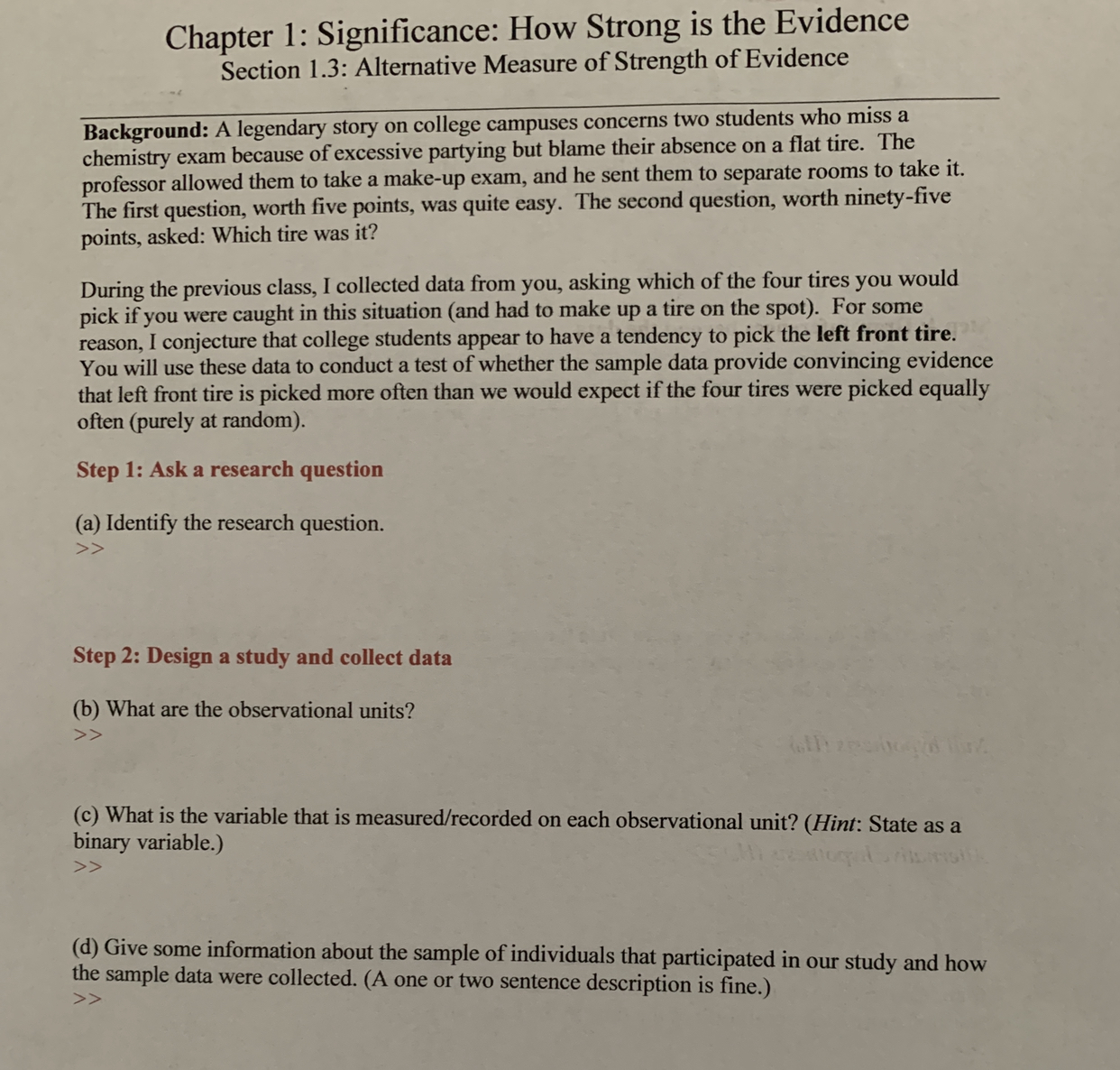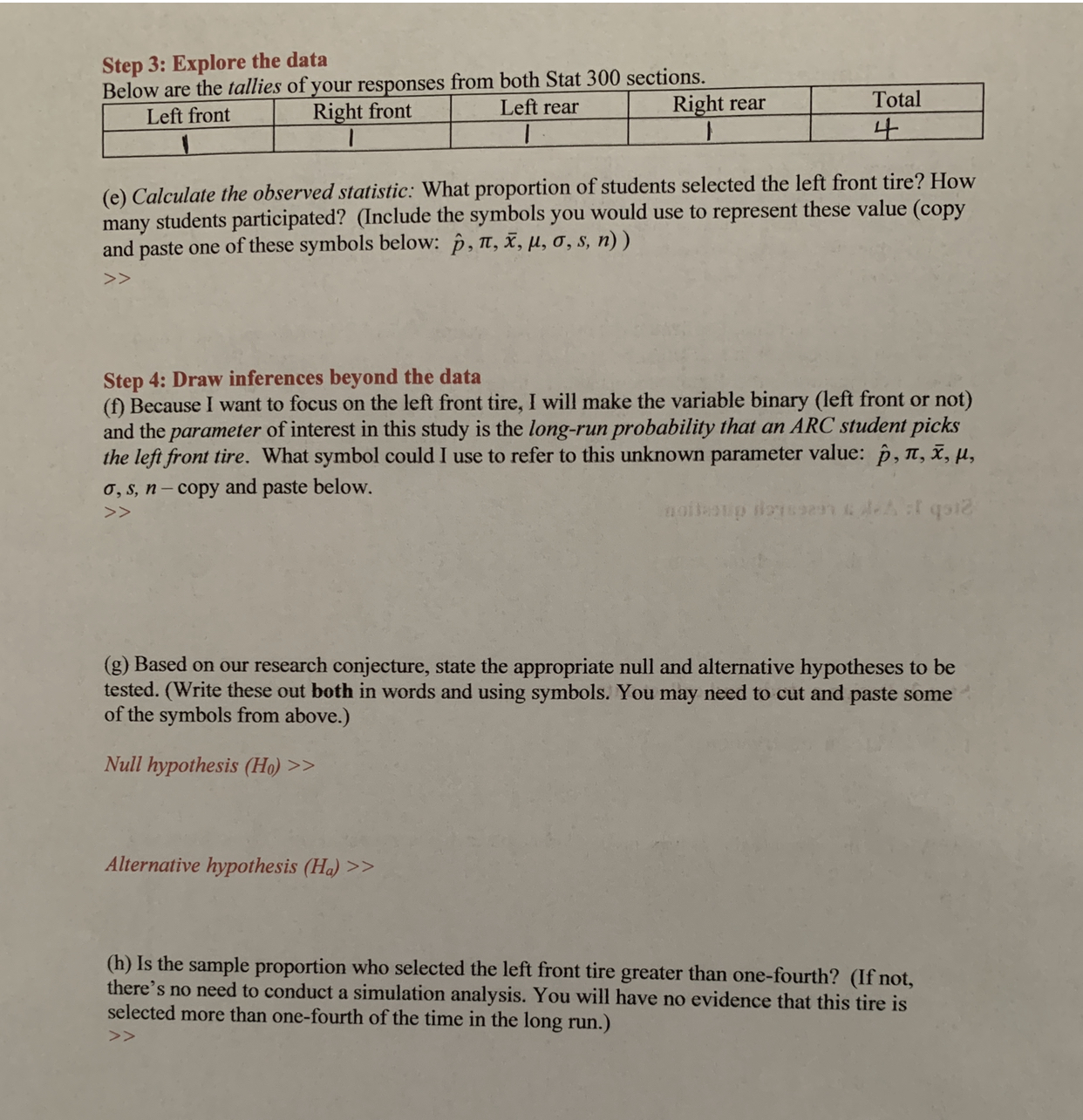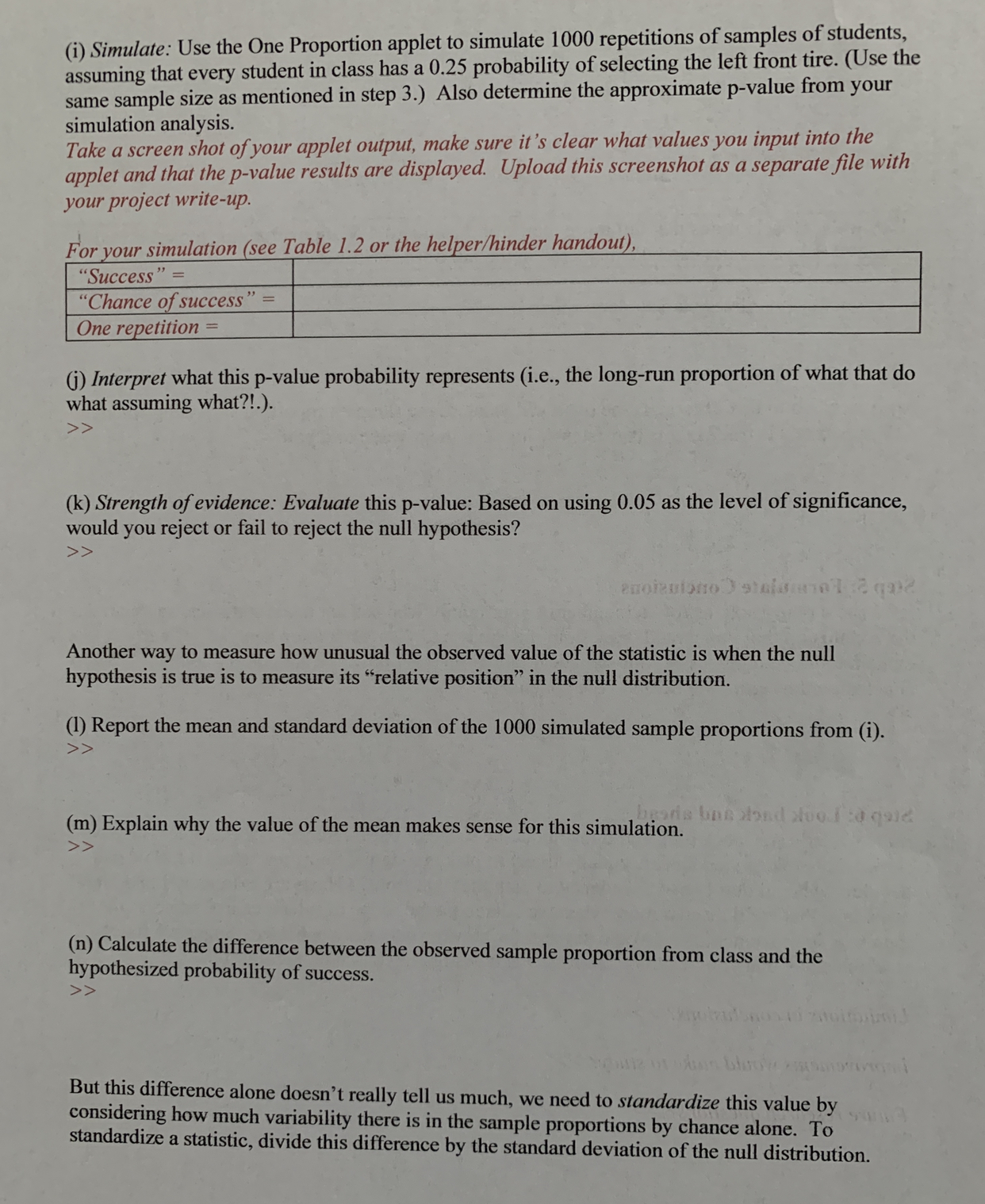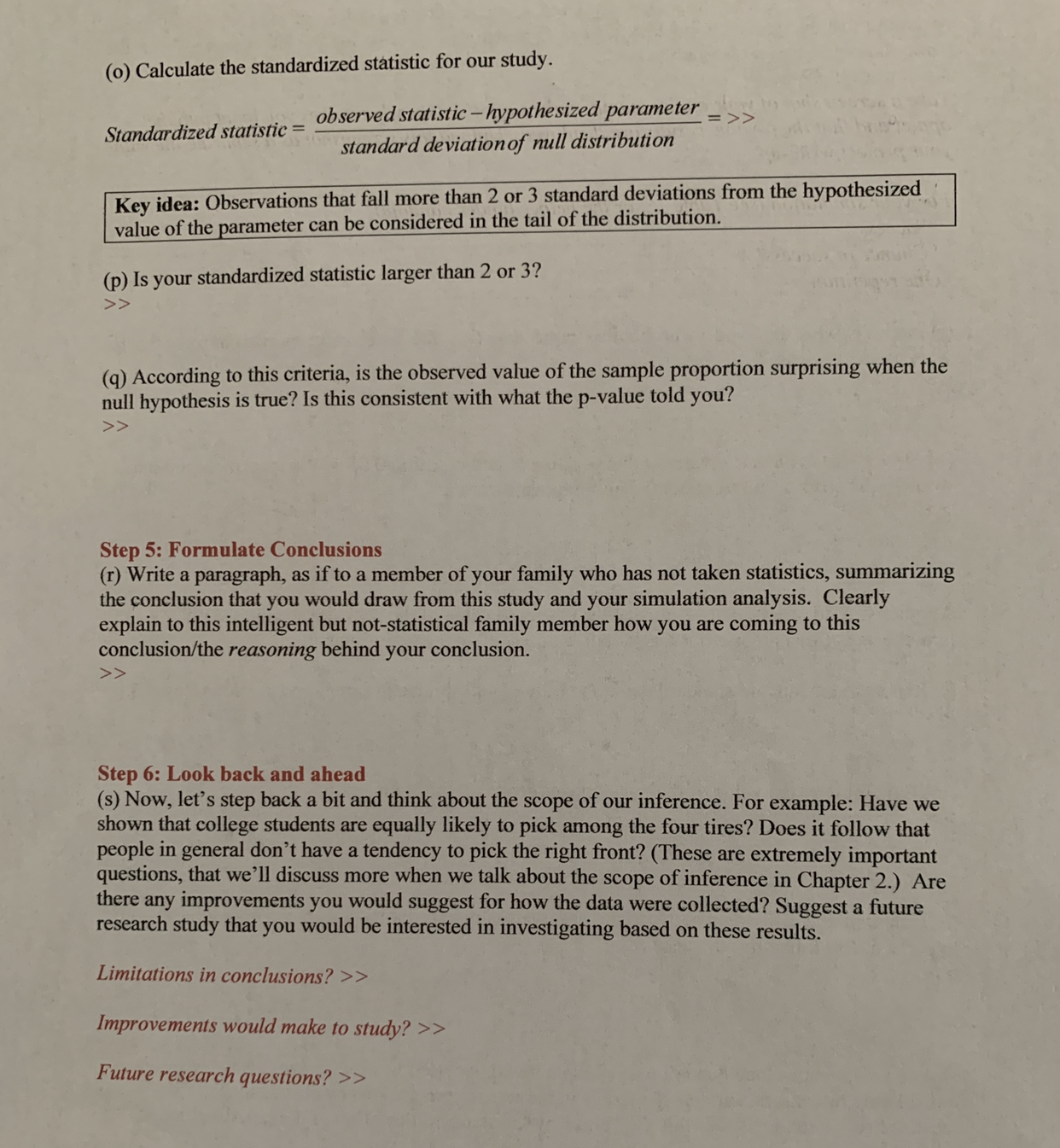Hello, please, I was given this project, and seeking help from a tutor is totally allowed. Can you please go through it to see if there is any help you can give? I have recorded tallies of responses in image number 2 or page 2 if needed. Also, if you look on page 3 or image number 3, there is an applet simulation result record of which I don't know how to use the applet pretty well. I will appreciate your help and guidance with these problems. Are you able to screenshot the applet page when you are done? I want to look at it and see how it is done. Thank you so much for your help.
Chapter 1: Significance: How Strong is the Evidence Section 1.3: Alternative Measure of Strength of Evidence Background: A legendary story on college campuses concerns two students who miss a chemistry exam because of excessive partying but blame their absence on a flat tire. The professor allowed them to take a make-up exam, and he sent them to separate rooms to take it. The first question, worth five points, was quite easy. The second question, worth ninety-five points, asked: Which tire was it? During the previous class, I collected data from you, asking which of the four tires you would pick if you were caught in this situation (and had to make up a tire on the spot). For some reason, I conjecture that college students appear to have a tendency to pick the left front tire. You will use these data to conduct a test of whether the sample data provide convincing evidence that left front tire is picked more often than we would expect if the four tires were picked equally often (purely at random). Step 1: Ask a research question (a) Identify the research question. > > Step 2: Design a study and collect data (b) What are the observational units? > > (c) What is the variable that is measured/recorded on each observational unit? (Hint: State as a binary variable.) (d) Give some information about the sample of individuals that participated in our study and how > (g) Based on our research conjecture, state the appropriate null and alternative hypotheses to be tested. (Write these out both in words and using symbols. You may need to cut and paste some of the symbols from above.) Null hypothesis (Ho) > > Alternative hypothesis (Ha) > > (h) Is the sample proportion who selected the left front tire greater than one-fourth? (If not, there's no need to conduct a simulation analysis. You will have no evidence that this tire is selected more than one-fourth of the time in the long run.)(i) Simulate: Use the One Proportion applet to simulate 1000 repetitions of samples of students, assuming that every student in class has a 0.25 probability of selecting the left front tire. (Use the same sample size as mentioned in step 3.) Also determine the approximate p-value from your simulation analysis. Take a screen shot of your applet output, make sure it's clear what values you input into the applet and that the p-value results are displayed. Upload this screenshot as a separate file with your project write-up. For your simulation (see Table 1.2 or the helper/hinder handout), "Success" = "Chance of success" = One repetition = () Interpret what this p-value probability represents (i.e., the long-run proportion of what that do what assuming what?!.). (k) Strength of evidence: Evaluate this p-value: Based on using 0.05 as the level of significance, would you reject or fail to reject the null hypothesis? enolautono ) slalommal a que Another way to measure how unusual the observed value of the statistic is when the null hypothesis is true is to measure its "relative position" in the null distribution. (1) Report the mean and standard deviation of the 1000 simulated sample proportions from (i). (m) Explain why the value of the mean makes sense for this simulation. (n) Calculate the difference between the observed sample proportion from class and the hypothesized probability of success. But this difference alone doesn't really tell us much, we need to standardize this value by considering how much variability there is in the sample proportions by chance alone. To standardize a statistic, divide this difference by the standard deviation of the null distribution.(o) Calculate the standardized statistic for our study. Standardized statistic = observed statistic - hypothesized parameter => > standard deviation of null distribution Key idea: Observations that fall more than 2 or 3 standard deviations from the hypothesized value of the parameter can be considered in the tail of the distribution. (p) Is your standardized statistic larger than 2 or 3? (q) According to this criteria, is the observed value of the sample proportion surprising when the null hypothesis is true? Is this consistent with what the p-value told you? Step 5: Formulate Conclusions (r) Write a paragraph, as if to a member of your family who has not taken statistics, summarizing the conclusion that you would draw from this study and your simulation analysis. Clearly explain to this intelligent but not-statistical family member how you are coming to this conclusion/the reasoning behind your conclusion. > > Step 6: Look back and ahead (s) Now, let's step back a bit and think about the scope of our inference. For example: Have we shown that college students are equally likely to pick among the four tires? Does it follow that people in general don't have a tendency to pick the right front? (These are extremely important questions, that we'll discuss more when we talk about the scope of inference in Chapter 2.) Are there any improvements you would suggest for how the data were collected? Suggest a future research study that you would be interested in investigating based on these results. Limitations in conclusions? > > Improvements would make to study? > > Future research questions? > >










